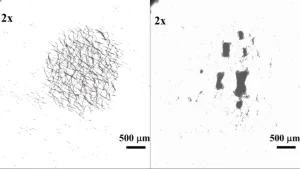A team of scientists at the Chinese University of Hong Kong has announced a major breakthrough in the fight against blood clots, thanks to a new technology that controls nano-robots in a revolutionary way, simulating the natural behaviour of swarms. Nano-robots, tiny machines measured in nanometres (where one nanometre equals one billionth of a metre), have the potential to perform nanoscale mechanical tasks with unprecedented precision and mobility.
These tiny ‘workers’ may be the key to tackling the most complex medical challenges.Led by Associate Professor Li Zhang, the team has developed an innovative strategy that harnesses oscillating magnetic fields to create highly reconfigurable swarms of nano-robots. These nano-robots consist of millions of magnetic nanoparticles, each smaller than one micron, or one-fifth the length of a red blood cell. What makes this technology unique is its amazing reconfigurability. By tuning the applied magnetic fields, the ‘micro-swarm’ of nano-robots can undergo a series of complex structural transformations, such as extending, shrinking, splitting and merging, all with extraordinary precision.
Professor Zhang emphasised the importance of this discovery, pointing out that the ‘micro-swarm’ can be controlled at high speed in a way never seen before. The ability of these small machines to change their shape so precisely opens up new possibilities in the medical field. The hope is that surgeons can use these nano-robots to navigate through narrow spaces within the human body, including organs and blood vessels, to remove blood clots and deliver drugs in a targeted manner to the affected cells.
Despite the promising medical applications, it is important to note that nano-robots are still in the research and development phase, and clinical trials on humans need to be approved, given compliance with strict human testing regulations. Zhang’s team is working in collaboration with medical professionals to explore the clinical potential of nano-robots. In particular, animal studies are underway that could pave the way for future clinical advances.
Zhang’s project is based on mimicking the behaviour of swarms in nature, in which groups of agents can achieve results that single individuals could never achieve. Swarm behaviour is observed in birds, fish, insects and even bacteria.Professor Zhang admitted that the project was also influenced by representations of nano-robots in popular culture, citing films such as ‘Big Hero Six’ and ‘Transformers’.
However, there are limitations in the application of nano-robots, such as the inability to operate effectively in the heart due to the speed of blood flow. Professor Zhang stressed the importance of recognising these current limitations while continuing to explore the vast potential of nano-robots in medicine.
“I always invite my students to share this adventure with me, because we are still in a learning phase. The future holds many surprises for us,’ Zhang concluded.
